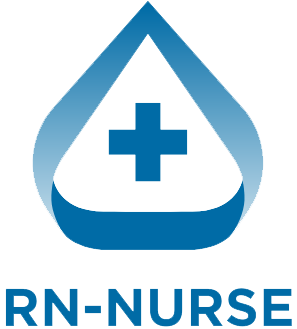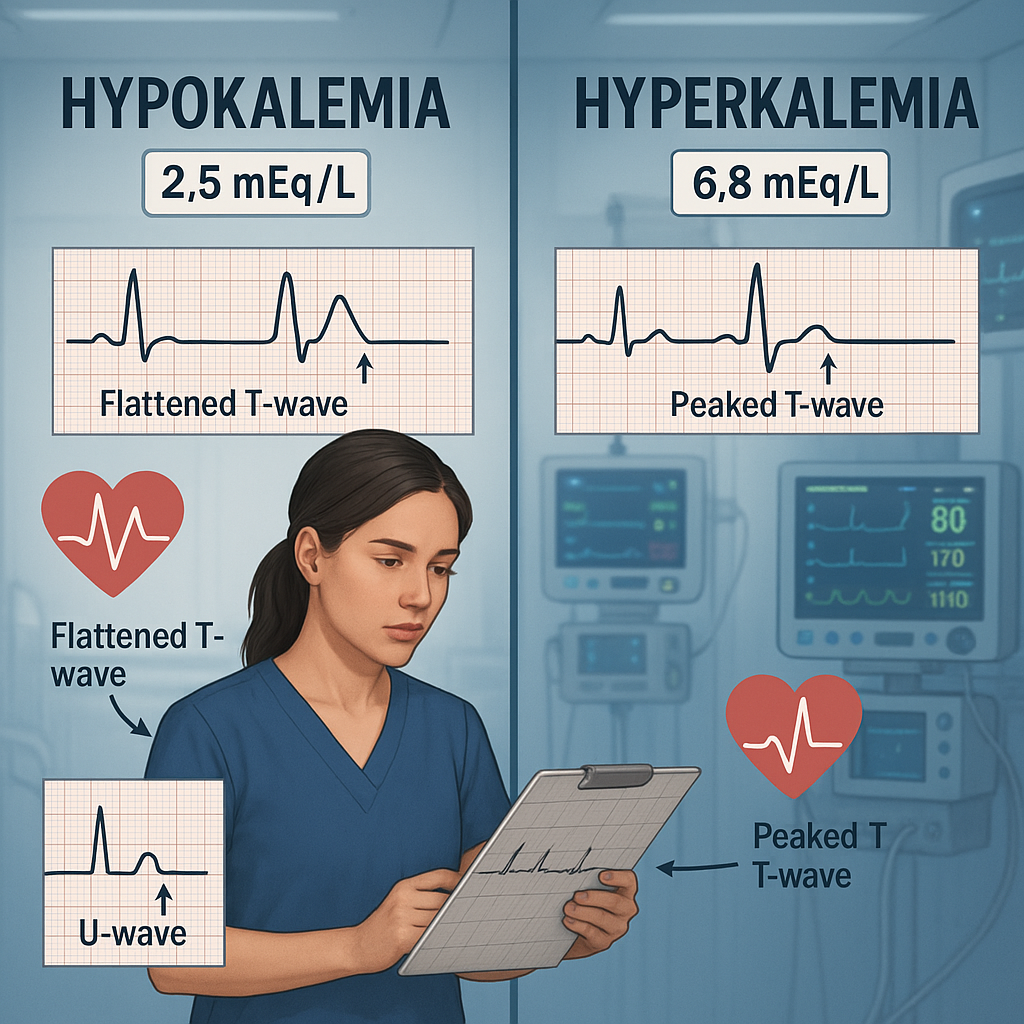Introduction
Potassium is a key electrolyte that helps your heart and muscles work correctly. If potassium levels are too low or too high, it can become life-threatening. In this article, we’ll break down hypokalemia (low potassium) and hyperkalemia (high potassium) in a simple way. You’ll learn what causes them, how they show up on an EKG, and what you should do as a nurse or healthcare student.
What Is Potassium and Why Is It Important?
Potassium (K⁺) is found inside your cells. It helps your muscles contract, nerves send signals, and your heart keep a steady rhythm. The normal potassium range is 3.5 to 5.0 mEq/L.
🤏 Hypokalemia (Low Potassium)
Definition: Potassium level is less than 3.5 mEq/L
Common Causes
- Diuretics (like furosemide)
- Vomiting or diarrhea
- NG suction
- Excess insulin
- Not eating enough potassium (e.g., poor nutrition)
Signs and Symptoms
- Muscle weakness or cramps
- Fatigue
- Constipation
- Irregular heartbeat
- Shallow breathing
EKG Changes in Hypokalemia
- Flattened or inverted T-waves
- Presence of U-waves
- ST depression
- Prolonged QT interval
These changes can lead to dangerous arrhythmias.
What Nurses Should Do (Priority Actions)
- Monitor cardiac rhythm with telemetry
- Give oral or IV potassium (as ordered)
- Watch for signs of digoxin toxicity
- Teach the patient about potassium-rich foods (bananas, spinach, potatoes)
- Monitor labs and kidney function
⚠️ Never give IV potassium as a push. It must always be diluted and given slowly.
🔺 Hyperkalemia (High Potassium)
Definition: Potassium level is greater than 5.0 mEq/L
Common Causes
- Kidney failure (kidneys can’t get rid of K⁺)
- Potassium-sparing diuretics (like spironolactone)
- ACE inhibitors (like lisinopril)
- Tissue damage (burns, trauma, hemolysis)
- Acidosis
Signs and Symptoms
- Muscle weakness
- Fatigue
- Numbness or tingling
- Slow or irregular heartbeat
- Risk of cardiac arrest
EKG Changes in Hyperkalemia
- Peaked T-waves (tall and narrow)
- Widened QRS complex
- Flattened or missing P-waves
- Can progress to ventricular fibrillation or asystole
What Nurses Should Do (Priority Actions)
- Place the patient on a cardiac monitor
- Stop potassium-containing meds
- Give calcium gluconate (protects the heart)
- Administer insulin + glucose (pushes K⁺ into cells)
- Give sodium bicarbonate (if acidotic)
- Use diuretics or dialysis if needed
Quick Comparison Table
FeatureHypokalemiaHyperkalemiaPotassium Level< 3.5 mEq/L> 5.0 mEq/LEKG SignsFlat T-wave, U-wavePeaked T-wave, wide QRSKey SymptomsMuscle cramps, irregular pulseWeakness, slow HR, arrhythmiasCommon CausesVomiting, diureticsKidney failure, acidosisNursing ActionsReplace K⁺, monitor heartCardiac monitoring, meds to lower K⁺
Final Thoughts
Understanding the differences between hypokalemia and hyperkalemia is critical for keeping patients safe. Watch the EKG, look at symptoms, and act fast. Potassium imbalances can quickly turn into emergencies, so early recognition is key.

